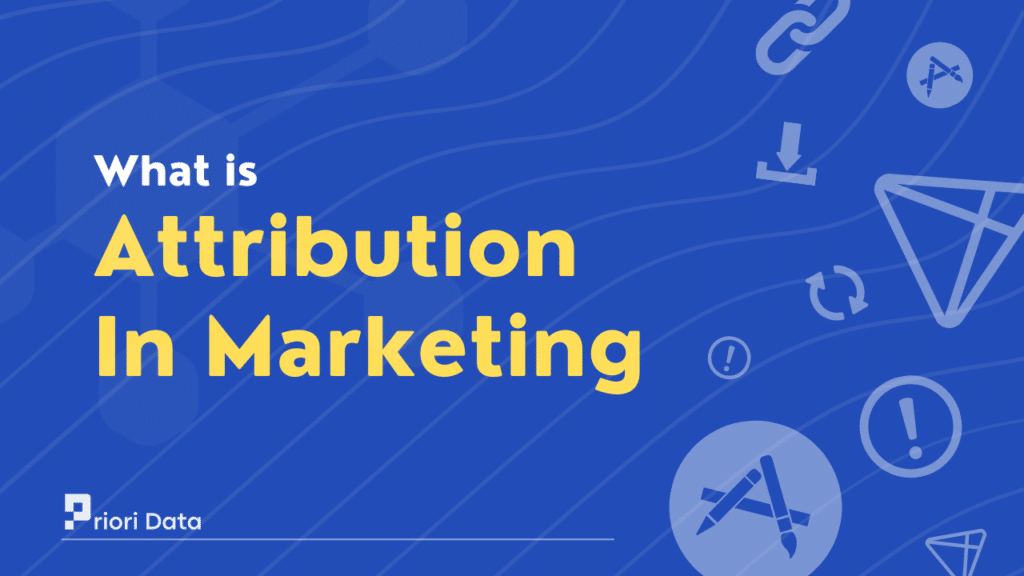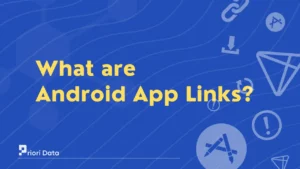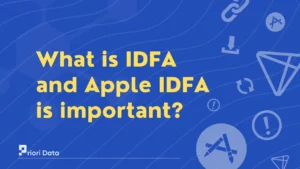Attribution is a process that helps marketers to identify the most driving channels. Conversions are led through assigned credit to a touchpoint or a marketing channel.
It analyzes the user journey, giving credit to different touchpoints along the way. These touchpoints may include social media ads, email campaigns, organic searches, and more.
For example, if a user watches an ad for a particular item on Instagram. He clicks the ad and goes through to the website, and purchases it.
Then, the attribution would give credit to Instagram for driving that sale. This model can be complex or simple, but their goal is always the same. That is to analyze the impact of marketing efforts contributing to business outcomes.

Why is attribution important?
Attribution is critical to marketing as it allows marketers to make optimal decisions. Without attribution, marketers would be guessing about the channels that drive the outcome.
This could result in wasted ad spend and missed opportunities. With attribution, marketers can identify the most effective channels for their campaigns.
For example, if you find that email campaigns are leading the conversions. Then, you can invest more in that channel to generate more revenue. They can adjust their campaigns for increasing revenue by return on investment (ROI).
Attribution provides insights into the path that users take before making a sale. Users today interact with many brands across multiple touchpoints. From social media ads to email campaigns, even to in-store visits.
By understanding this journey, marketers can identify where users are dropping off. Either where the users are getting stuck, optimize their strategies according to it.
What is an attribution report?
An attribution report is a document that provides a conversion details overview. This report typically uses an attribution model to give credit for each touchpoint.
Touchpoint includes such as first touch, last touch, linear, time decay, or U-shaped. It is based on its contribution and the sales made in the user’s journey. The report includes the number of sales and any other key metrics.
The report may provide an analysis of the performance of individual touchpoints. It can also show the performance of each channel, such as paid search, social media, or display ads.
This information can help businesses to get an idea about the most driving channels. So, that they can focus on those resources for optimizing their marketing efforts. This may include suggestions for adjusting budgets, refining messaging, or offers.
How does attribution work?
1. First-touch attribution
This model give all the credit to the first touchpoint that the user interacts with. This model is useful for understanding how users first became aware of a brand. But it may not provide a complete picture of the user journey.
For example, if a user clicks on an Instagram ad and then later purchases an item. Then, all credit will be only to the Instagram ad regardless of later ads.
2. Last-touch attribution
This model assigns all credit for the last touchpoint that the user interacts with. This model is simple and easy, but it can be misleading.
As it ignores all the other touchpoints that may have contributed to the sale. For example, if a user sees an Instagram ad and the same ad later it was on Google search ads.
When the user clicks on a Google search ad and then later purchases an item. Then, all credit would be given to the Google search ad.
3. Linear attribution
This model gives equal credit to all touchpoints that a user interacts with. It gives a complete view of the user journey than first or last-touch attribution.
But it may not reflect the true impact of each touchpoint on the sale. For example, if a user clicks on a Facebook ad, then a Google search ad, and finally purchases an item.
Then, each touchpoint would get equal credit for the action made.
4. Time decay attribution
This model gives more credit to touchpoints that occurred closer in time to the sale. This model is useful for understanding how users move through the sales funnel.
But it may not reflect the true impact of each touchpoint on the sale. For example, if a user first saw an ad on Facebook, then clicked on a Google ad a few days later. After that, he finally purchased that item through an email promotion.
In the time decay model, the email promotion would receive the most credit for the sale. It is followed by the Google ad, and then the Facebook ad.
The Google ad would receive less credit because it was further back in time. The Facebook ad would receive even less credit because it was the furthest back in time.
5. U-Shaped attribution
This model assigns more credit to two touchpoints in the entire user journey. Those are the first touchpoints and the last touchpoint.
In which the user gains attention from the first and purchased an item at the last touchpoint. It assumes that these two touchpoints are the most critical in a user’s journey.
For example, a user saw an ad on social media and then made a sale after receiving an email promotion.
In this model, the social media ad and the email promotion would receive the most credit for the sale. As they were the first and last touchpoints in the user’s journey.
6. W-Shaped attribution
This model assigns more credit to three touchpoints in the entire user journey. Those are the first, middle, and last touchpoints before a user purchased an item.
It assumes that all three of these touchpoints are important in a user’s journey. For example, a user clicked on a Google ad, visited the website, and signed up for a newsletter.
Later he purchased that item after receiving an email promotion. The Google ad, newsletter, and email would receive the most credit in the user journey.
FAQs
Ques 1: What is attribution in Google ads?
Ans. Attribution in Google Ads refers to assigning credit that led to the conversion. It could be such as ads, keywords, and other interactions on the website.
Ques 2: How do you track attribution?
Ans. Attribution tracks user behavior and identifies the touchpoints that led to conversions.
Ques 3: What is online attribution?
Ans. Online attribution is to assign credit to the marketing channels and touchpoints. That leads to a particular conversion or action online.
Ques 4: What are attribution tools?
Ans. Attribution tools are software or platforms used to track and analyze the touchpoints. That drives user actions to convert into conversions.
Ques 5: Which attribution model is best?
Ans. There is no single “best” attribution model as the model depends on the specific goals of the business.






